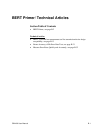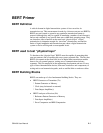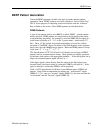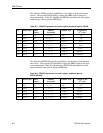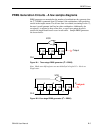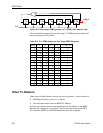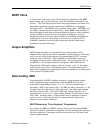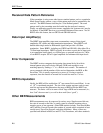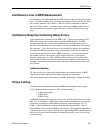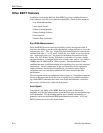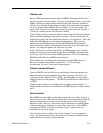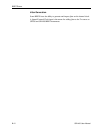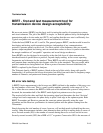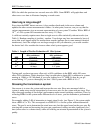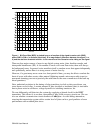
BERT Primer
B-8 GB1400 User Manual
Received Data Pattern Reference
If the transmitter is using some other known standard pattern, such as a particular
Mark-Space Density pattern, a copy of that pattern must also be generated by the
receiver. The BER reference data may be a User Defined pattern. The same
pattern used by the transmitter must be loaded into the analyzer's memory.
Finally, an application specific data stream, supplied at the customer site, may be
fed directly to the BERT Receiver as an external Reference Data source. Not all
BERTs have this feature, but our GB700 and GB1400 both do.
Data Input Amplifier(s)
The BERT input amplifier stage must accommodate a range of data signal
amplitudes, DC offsets and input termination impedances. Most BERTs will
handle either single ended or differential signals and provide a 50-Ohm
termination. Some BERTs, including our GB700 and GB1400, offer either 50 or
75 Ohm input impedance. BERTs typically do not have a great deal of input gain
to accommodate small signals, as oscilloscopes or spectrum analyzers do. Most
of our BERTs require 500 mV signal amplitude for minimum data input levels.
Error Comparator
The BERT receiver compares the incoming data stream bit-by-bit with its
internal pattern using an Exclusive OR gate (XOR) and responds to non-
matching inputs by sending a “1” to a built-in error counter. The number of
errors compared with the number of bits received determines the BER, or Bit-
Error Rate. This is usually expressed as a power of 10 using a negative
exponent, since the fraction of errored bits to total bits must be 1 or less.
BER Computation
Ideally, the BER will be smaller than 10
-9
(one errored bit in one billion). A rate
of 10
-6
is considered marginal. The size of the counter registers used to count
total bits and errored bits determines the range of BER which the BERT can
measure. The limits will be in terms of how large a BER can be measured (i.e.,
how “bad” the error rate is), as well as how small (how “good”).
Other BER Measurements
BER measurements may be expressed in various ways: Simple errored bit rate,
the ratio of errored to total bits, is usually stated in scientific notation using a
negative power of ten exponent. Other BER statistics include: Total Errored Bits
and Total Bits, Errored Seconds (the number of seconds which contained at least
one bit error), Error-Free Seconds, and other definitions. Many of these are
specified and defined in BellCore and ITU Test Procedures, and other standards.




